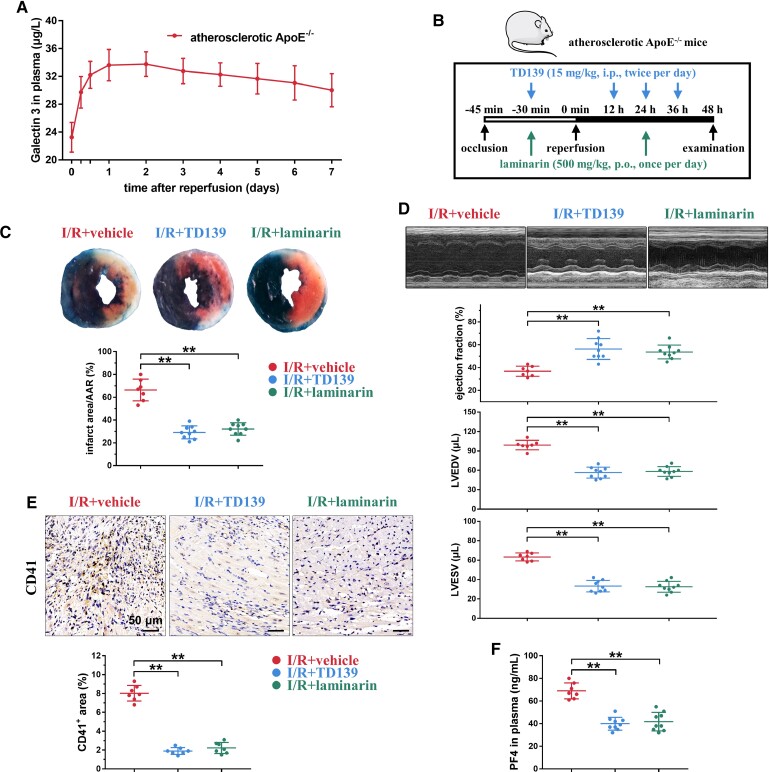Figure 7.
TD139 improves myocardial ischaemia–reperfusion injury by suppressing thrombosis and inflammation in atherosclerotic ApoE−/− mice. (A) Time-dependent increase in plasma Galectin-3 levels over 7 days after myocardial ischaemia–reperfusion (I/R) surgery in atherosclerotic ApoE−/− mice. Summary data are presented (n = 4, each time point). (B) Schematic protocol of TD139 treatment in myocardial I/R study using atherosclerotic ApoE−/− mice and wild-type mice. (C) TD139 and laminarin markedly decreased the infarct area/AAR ratio. The blue area, which was stained by Evans blue, indicates the non-infarct area, while the area not stained by Evans blue represents the AAR. The red area shows viable myocardium, which can be stained by TTC, and the white area indicates the infarct area. Representative results (Evans blue/TTC stain) of left ventricular tissue sections and summary data are presented (n = 7–9 per group). (D) TD139 and laminarin improved heart function, including ejection fraction (E-F) and left ventricular volume indices [left ventricular end-diastolic volume (LVEDV) and left ventricular end-systolic volume (LVESV)]. Representative M-mode echocardiograms and summary data are presented (n = 7–9 per group). (E) Both TD139 and laminarin decreased myocardial I/R injury-induced microthrombi in the cardiac tissue. The representative results and summary data were presented (n = 7). (F) Both TD139 and laminarin decreased plasma PF4 concentrations after myocardial I/R injury. Summary data are presented (n = 7–9 per group). Statistical analyses were performed using one-way ANOVA followed by Dunnett's multiple comparison test in (C)–(F). **P < 0.01.

